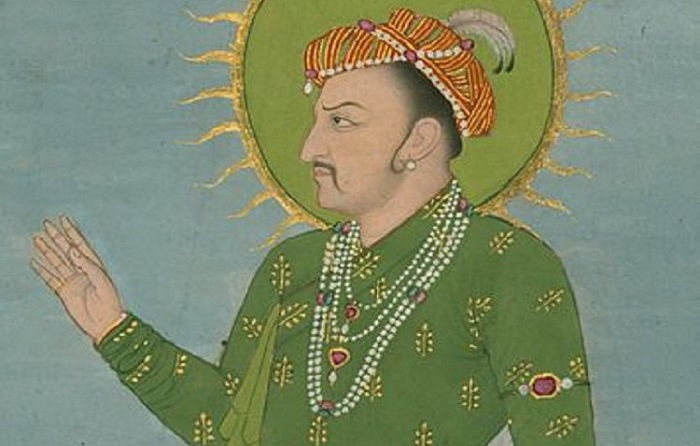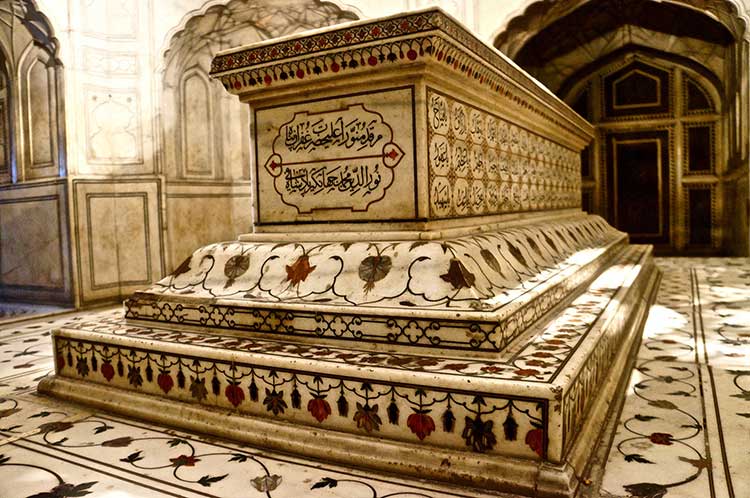The Tomb of Jahangir aka Jahangir ka Maqbra located in Shahdra Town near Lahore city, a masterpiece of Mughal architecture, is a site of historical and cultural significance. Join us on a journey through time as we explore the rich history and architectural marvels of this splendid mausoleum.
The Emperor Jahangir
Before delving into the tomb itself, let’s briefly introduce the man for whom this magnificent structure was erected: Emperor Nur-ud-din Muhammad Jahangir. Jahangir, the fourth emperor of the Mughal dynasty, ruled from 1605 to 1627.

He was known for his love of art, culture, and nature, and his reign marked a period of artistic flourishing in the Mughal Empire.
History of Tomb of Jahangir
The Tomb of Jahangir was commissioned by the Emperor’s son, Shah Jahan, the builder of the iconic Taj Mahal. Construction began in 1627, shortly after Jahangir’s death, and was completed in 1637.

The tomb is located in Shahdara Bagh, a picturesque garden along the banks of the Ravi River. The serene surroundings make it an ideal resting place for the emperor.
Architectural Marvel
The tomb is a fine example of Indo-Islamic architecture, blending Persian and Indian design elements. It stands as a four-tiered structure, with each tier adorned with intricate ornamentation. The exterior is clad in red sandstone, creating a striking contrast with the white marble lattice screens and floral motifs.

The central chamber houses the sarcophagus of Emperor Jahangir, while smaller chambers around it contain the tombs of his wife, Empress Nur Jahan, and other family members.
![Exploring the Majestic Tomb of Jahangir: A Glimpse into Mughal Grandeur - FastNewsHD Nur Jahan (Mughal Queen) ~ Bio with [ Photos | Videos ]](https://alchetron.com/cdn/nur-jahan-af95698a-993f-4bee-9752-5a608e708f6-resize-750.jpeg)
The Garden Complex
One cannot discuss the Tomb of Jahangir without mentioning the splendid garden that surrounds it. Shah Jahan, a connoisseur of gardens, ensured that this site would be a fitting final resting place for his father.

The garden is meticulously laid out in the charbagh style, with pathways dividing the garden into quadrants. Chinar trees, cypresses, and a profusion of flowering plants provide a tranquil atmosphere. It’s no wonder that this garden was Jahangir’s favorite during his lifetime.
Intricate Calligraphy and Art
The tomb is a treasure trove of Mughal artistry. The exterior walls feature stunning calligraphic inscriptions from the Quran, intricately carved into the sandstone. The decorative panels, arabesques, and frescoes inside the tomb showcase the artistic prowess of the Mughal artisans of the time.

This combination of architectural elegance and artistic brilliance is a hallmark of Mughal monuments.
Cultural Significance
The Tomb of Jahangir not only serves as a remarkable architectural gem but also holds cultural significance. It stands as a symbol of the Mughal dynasty’s contributions to art, architecture, and culture. It’s a testament to the legacy of Emperor Jahangir, a ruler who valued the arts and whose reign marked a period of cultural efflorescence.

Visiting the Tomb
Today, the Tomb of Jahangir is open to the public and is a popular tourist destination. Visitors can explore the exquisite architecture, stroll through the lush gardens, and immerse themselves in the historical and cultural heritage of the Mughal Empire.

The Tomb of Jahangir is not merely a mausoleum; it is a living testament to the glory of the Mughal era. It invites visitors to step back in time and appreciate the artistic finesse and cultural richness of that bygone age. So, if you ever find yourself in Lahore, don’t miss the opportunity to visit this splendid monument and experience the grandeur of Mughal history firsthand.
Do visit this historical place with your friends and family and have a glimpse of Mughal Era.
Read more about “Samadhi of Maharaja Ranjit Singh” on Fats News HD | Home of Nation


